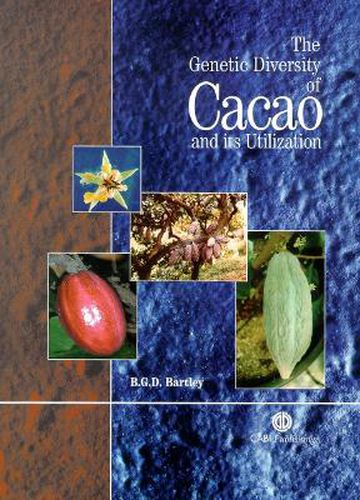Readings Newsletter
Become a Readings Member to make your shopping experience even easier.
Sign in or sign up for free!
You’re not far away from qualifying for FREE standard shipping within Australia
You’ve qualified for FREE standard shipping within Australia
The cart is loading…






An understanding of genetic resources is an essential prerequisite for any breeding programme. The cacao (Theobroma cacao) plant has a rich genetic diversity that exists at two levels: that of the primitive populations in the area of original distribution of the species, and that of the derived cultivated populations. This book provides a comprehensive review of our current knowledge of this subject. Starting with the foundations of genetic diversity in the Amazonian and Caribbean regions, it describes how this has developed in cultivated populations, first in South America and around the Caribbean, and then beyond the Americas. It then describes the relationships between populations and how the genetic resources can be utilized to produce new cultivars. The book is written by an acknowledged world expert with 50 years of experience in the subject, and should provide a unique knowledge base upon which further work can be based.
$9.00 standard shipping within Australia
FREE standard shipping within Australia for orders over $100.00
Express & International shipping calculated at checkout
An understanding of genetic resources is an essential prerequisite for any breeding programme. The cacao (Theobroma cacao) plant has a rich genetic diversity that exists at two levels: that of the primitive populations in the area of original distribution of the species, and that of the derived cultivated populations. This book provides a comprehensive review of our current knowledge of this subject. Starting with the foundations of genetic diversity in the Amazonian and Caribbean regions, it describes how this has developed in cultivated populations, first in South America and around the Caribbean, and then beyond the Americas. It then describes the relationships between populations and how the genetic resources can be utilized to produce new cultivars. The book is written by an acknowledged world expert with 50 years of experience in the subject, and should provide a unique knowledge base upon which further work can be based.